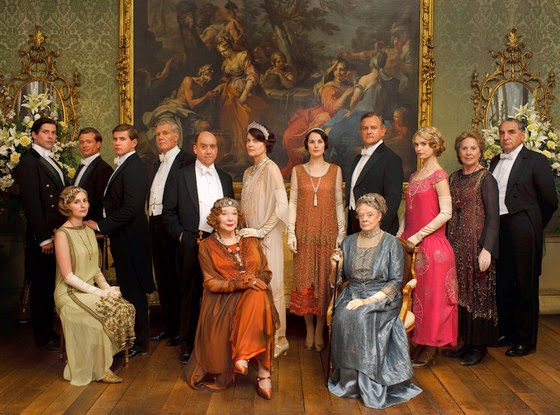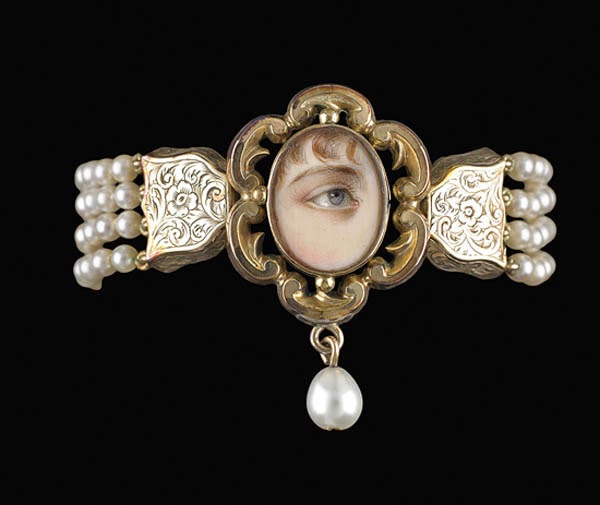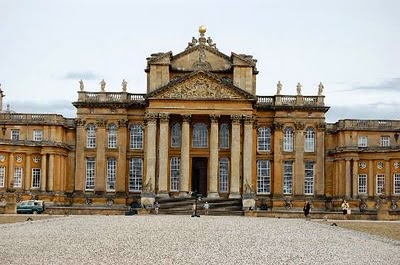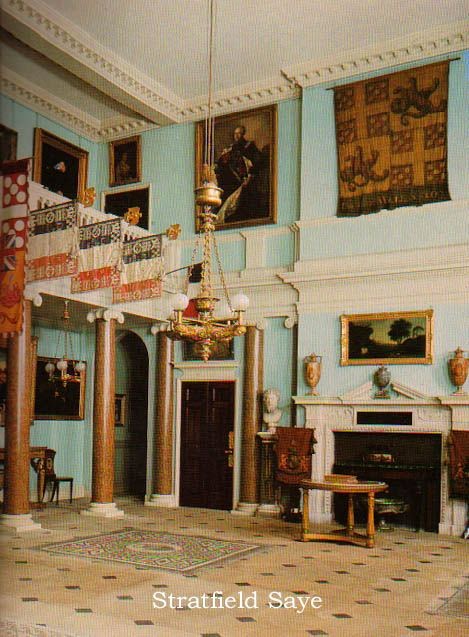Victoria here. In 2013, I was delighted to have the opportunity to explore the newly installed collection of early American furniture in D.C.’s National Gallery of Art (the post is here). A few weeks ago, I went back for another visit. Historical fiction writer Diane Gaston and I love browsing through the galleries — almost as much as we enjoy our luncheon in the charming Garden Café. In the distant background is the Gallery of the Kaufman Collection, which had to wait until we were well nourished.
THE DUKE OF WELLINGTON TOUR — VIDEO HIGHTLIGHTS – PART 10
DOWNTON ABBEY
When we visit Highclere Castle on Thursday, September 11, 2014, we will probably be thinking more of Downton Abbey, the PBS Masterpiece series, than of the sumptuous home of the Earls of Carnarvon. Victoria here, as eager to see the Castle/Abbey as anyone. I truly believe that a large part of the credit for DA’s success in America is due to the setting at Highclere Castle: The grounds, the enormous house designed in the most extravagant of Victorian neo-Gothic style, the magnificent interiors of the family’s drawing rooms and bedchambers, the stark simplicity and dullness of the servants’ world below stairs. The contrasts could not be more vivid.
Downton Abbey, PBS Masterpiece
The Crawley family, headed by Robert, Earl of Grantham (High Bonneville), live at the fictional Downton Abbey, filmed at Highclere Castle, the home of the Earls of Carnarvon. Most of the upstairs scenes are filmed in the rooms of the Abbey or on the grounds. The servants quarters have been recreated as they would have been in 1900 to 1930 at studies on nearby Ealing, West London. In this 4-minute video, creator and writer Julian Fellowes takes you through Highclere. Click here.
Another look at Highclere as Downton Abbey is an 8-minute fragment of the program Countrywise visit. Click here
As almost every one knows, Downton Abbey has been a phenomenal success with audiences in Britain and North America, and elsewhere. The four years of the series have won numerous awards for its creator, Julian Fellowes, for its costumes and settings, and for the actors, some of whom have become “household names.” Probably taking first place would be Violet, Dowager Countess of Grantham, whose pithy comments delight audiences on both sides of the Atlantic. Click here to see some favorite moments.
The Inimitable Maggie Smith As Violet, Dowager Lady Grantham
Click here for a 13-minute video on the making of Downton Abbey, featuring many of the actors as well as the executive producer, writer, and historical advisor among others.
Although we’ve all seen the fourth season, you might enjoy the preview, a tease of just 90 seconds, put out before it played. Click here.
So to stand in Highclere Castle yourself, come along with us on The Duke of Wellington Tour. September 4-14, 2014. All the details are here.
See you in London!
LOOK OF LOVE OPENS IN MINNEAPOLIS
The Look of Love: Eye Miniatures from the Skier Collection
Here’s hoping you have had an opportunity to see this outstanding collections of treasures!
All photos, ©Birmingham Museum of Art, Sean Pathasema, photographer
THE DUKE OF WELLINGTON TOUR — VIDEO HIGHLIGHTS – PART 8
Stratfield Saye
To understand why the Duke of Wellington’s country house is the relatively modest Stratfield Saye, it is necessary to travel back to the victory of the Duke of Marlborough at the Battle of Blenheim in August 1704 over the forces of French King Louis XIV (and others).. England’s Queen Anne and her ministers were so delighted with the Duke’s victory that they decided to build him a great palace, a rival to their defeated enemy’s Palace of Versailles.
COMPLETE DETAILS AND ITINERARY FOR
THE DUKE OF WELLINGTON TOUR CAN BE FOUND HERE
REDISCOVERING EGYPT
The Collection of the Dahesh Museum of Art
When Napoleon Bonaparte’s armies occupied Egypt in 1798, they were accompanied by scientists, historians, and archaeologists. The European world developed a fascination with Egyptian art, architecture, and culture. Well into the 20th century and to the present day, European artists have expressed their admiration in their interpretations of the allure of the ancient and modern cultures of the Nile.
Koerner traveled to Egypt in 1873-74, and painted the huge columns of the temple, placing the human figures to illustrate the vast size of the columns.
The Dahesh Museum of New York City is devoted to collecting academic art of the 19th and 20th centuries. Organizing many exhibitions for museums and contributing loans to other exhibitions around the world is the mission of the Dahesh. This exhibition is co-curated by Director of Exhibitions David Farmer and Associate Curator Alia Nour; it is intended to survey “…the West’s fascination with Egypt and its diverse visual representations from 1798 until 1890.”
This painting by Alma Tadema was exhibited at London’s Royal Academy in 1874. The Old Testament’s Joseph is seated on the throne accompanied by a scribe counting the grain. Alma Tadema based the ancient Egyptian decoration and accoutrements in his picture on actual artifacts. Behind the throne is a painting now in the British Museum from the tomb of Nebamun.
The Baker Museum exhibition includes more than 90 works from the Dahesh Museum, the Mervat Zahid Cultural Foundation, and a private collection. In the words of the description, “With its broad themes and rich imagery, this exhibition demonstrates that the West’s visions of Egypt were fostered by many factors — not only political interest, but also new scientific and technological advances, methods of transportation, and communications, as well as Romanticism, and the changing art market.”
Gentz contrasts the dangerous performance with the noble ruins of the Temple of Madinet Habu in Thebes.
“When like an opening bud the flower of Youth
Unfolds its petals to the light of Truth,
Then mimic toys and tales of wondorous lore,
By puppets acted, charm not as before.
Amusement wearies out her skill in vain,
And calls the aid of music magic strain;
But happy childhood’s limit passed for e’er
Youth rashly craves reality and care.”
In the painting, the young noblewoman has outgrown the antics of her servants.The central figure, presumably a noble Egyptian girl, has become and adult and is no longer interested in the childish entertainment of her servants.
Corrodi’s work can be found in many collections including the Royal Collection, acquired by Queen Victoria and King George V.
If you are in the vicinity of Naples in the next few weeks, don’t miss these colorful and evocative paintings at the Baker Museum.
Naples, Florida, through May 18, 2014.




















